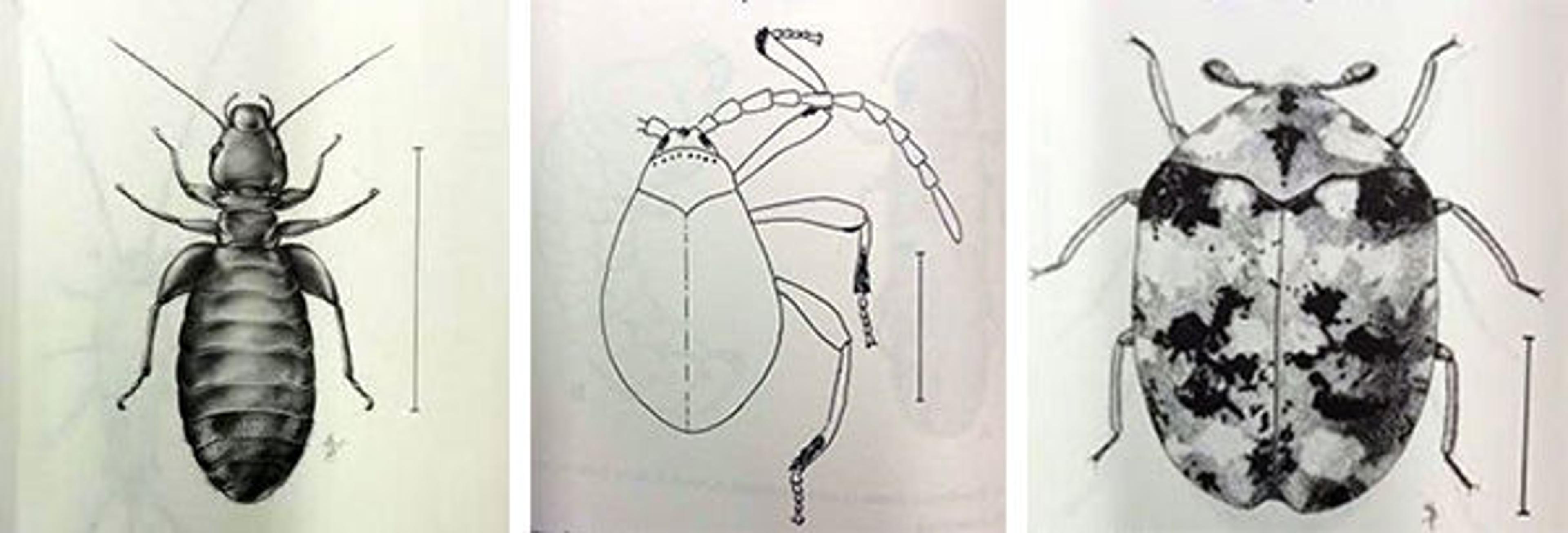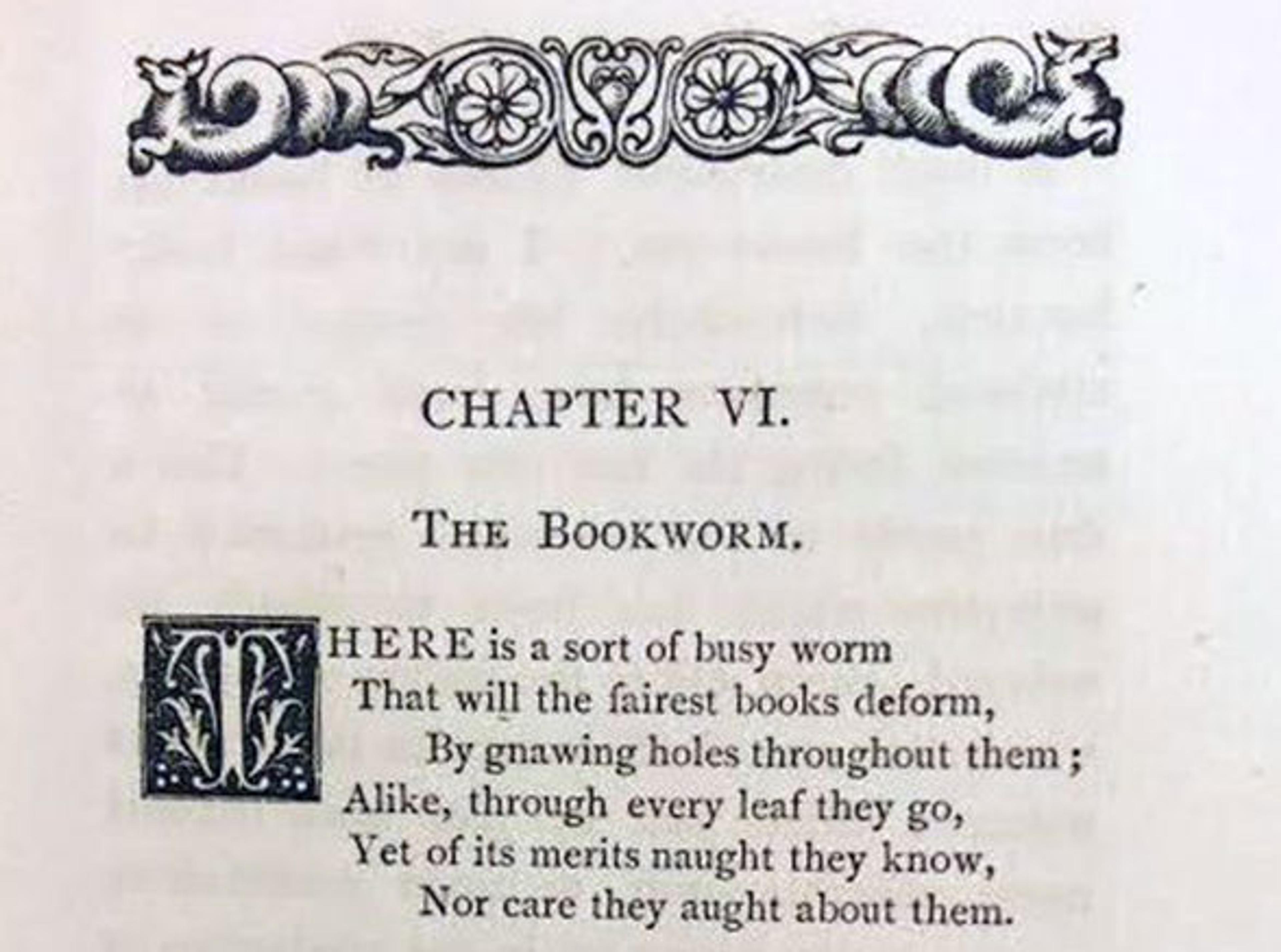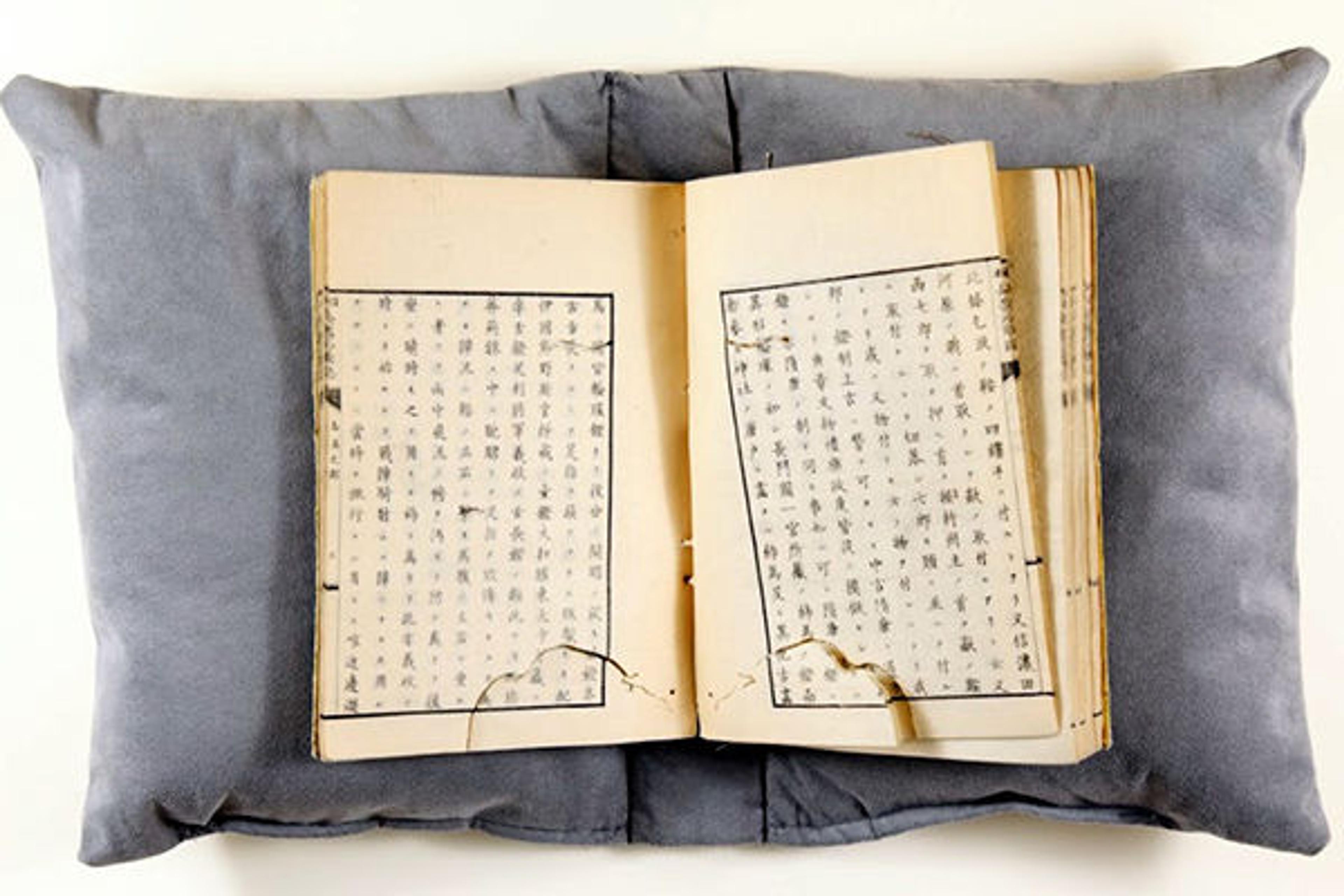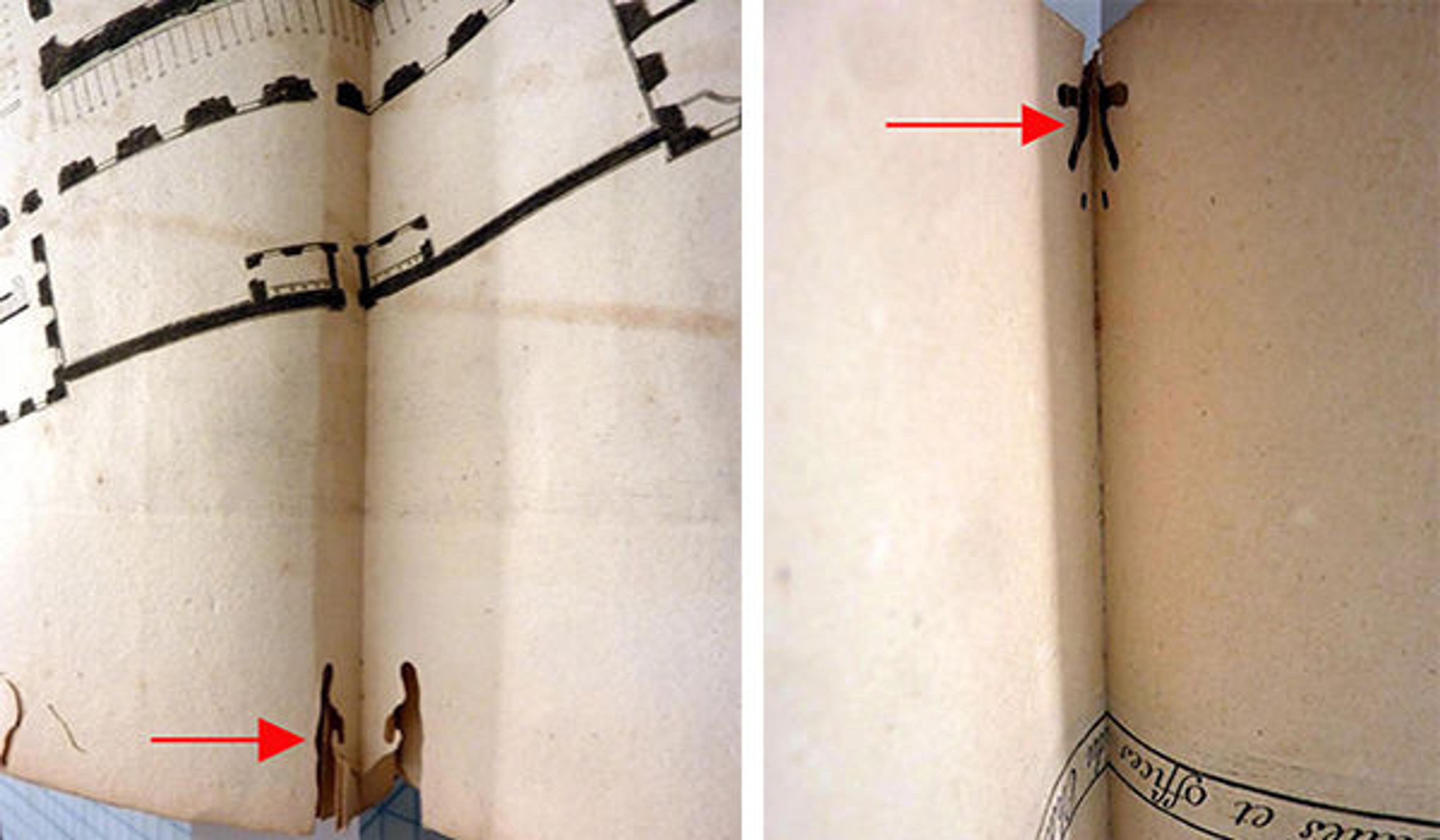
Left to right: Booklouse, spider beetle, furniture carpet beetle from A Guide to Museum Pest Control
«We call someone a bookworm if they're more comfortable with their nose in a book than interacting with a fellow human being. However, there are real, actual bookworms out there: insects that are attracted to a book's material, not its content. These pests represent a serious threat to library and museum collections, and I'll take a look at some of these pests here.»
"Bookworm" is a common name used for several hundred insects that feed on books, including booklouse, silverfish, powderpost beetle, spider beetle, common furniture beetle, Mexican book beetle, paper worm (larvae of the paper beetle or moth), and larder beetle. These insects are not necessarily interested in eating paper, but they can damage paper in their attempts to reach other materials. They actively feed on leather and cloth bindings, starch paste, animal glues, paper, and cardboard, creating tunnels and holes through these materials.

Tunnel on the fore edge of the text block most likely the result of the larvae damage. Photographs by author
The threat of insects to book collections was recognized in the Middle Ages when infested books were burned. In the late nineteenth century, British collector and printer William Blades wrote The Enemies of Books, wherein he expresses concern for the destruction of neglected books by their common enemies: fire, water, gas and heat, dust and neglect, ignorance and bigotry, bookbinders, collectors, servants and children, vermin, and bookworms. Blades introduces the reader to historic accounts about the appearance of insects in both the New and Old Worlds, describes different types of paper-eating larvae, and recounts his own experiences with insects and the damage they cause.

Image of a J. Doraston poem that opens chapter six of Blades's The Enemies of Books
Insect damage and infestation continue to be problems for library, museum, and private collections. The damage can take the form of losses, holes, and stains found in the spine margins or spread throughout the pages, obscuring the text.

Japanese book showing holes and areas of loss at the bottom and middle of the page caused by insect damage

Detail of pages with evidence of insect damage close to the spine
While insect damage may have been made in the past and the perpetrators are long gone, it is possible to find living insects in books in any library or home collection. Therefore, caution should always be applied when handling books with evidence of infestation.
Prevention and monitoring is the most cost-effective method of pest control. As suggested by Strzelczyk-Brąszkiewicz, you can help to prevent an infestation by regularly checking and maintaining your building, keeping your library clean, and establishing consistent temperature and relative humidity conditions in your library areas. In the case of infested collections, the Northeast Document Conservation Center (NEDCC) suggests that treatments should be tailored to the particular type of insect and material. According to NEDCC, chemical treatments should be the last resort, and new technologies such as blast freezing and modified atmospheres should be taken into consideration.
Sources and Additional Reading
Blades, William. The Enemies of Books. London: Elliot Stock, 1887.
Lindblom Patkus, Beth. "Emergency Management: Integrated Pest Management." Northeast Document Conservation Center, Preservation Leaflets. Accessed October 30, 2015. https://www.nedcc.org/free-resources/preservation-leaflets/3.-emergency-management/3.10-integrated-pest-management.
Museum of Fine Arts, Boston. "Bookworm." In Conservation and Art Material Encyclopedia Online. Accessed February 22, 2016. http://cameo.mfa.org/wiki/Bookworm.
Strzelczyk-Brąszkiewicz, Alicja Barbara. Biodeterioration of Historic Objects by Microorganisms and Insects: Prevention and Control. Torun Poland: Adam Marszalek, 2012.
Zycherman, A. Lynda, and J. Richard Schrock. A Guide to Museum Pest Control. Washington, D.C.: Association of Systematic Collections, 1988.